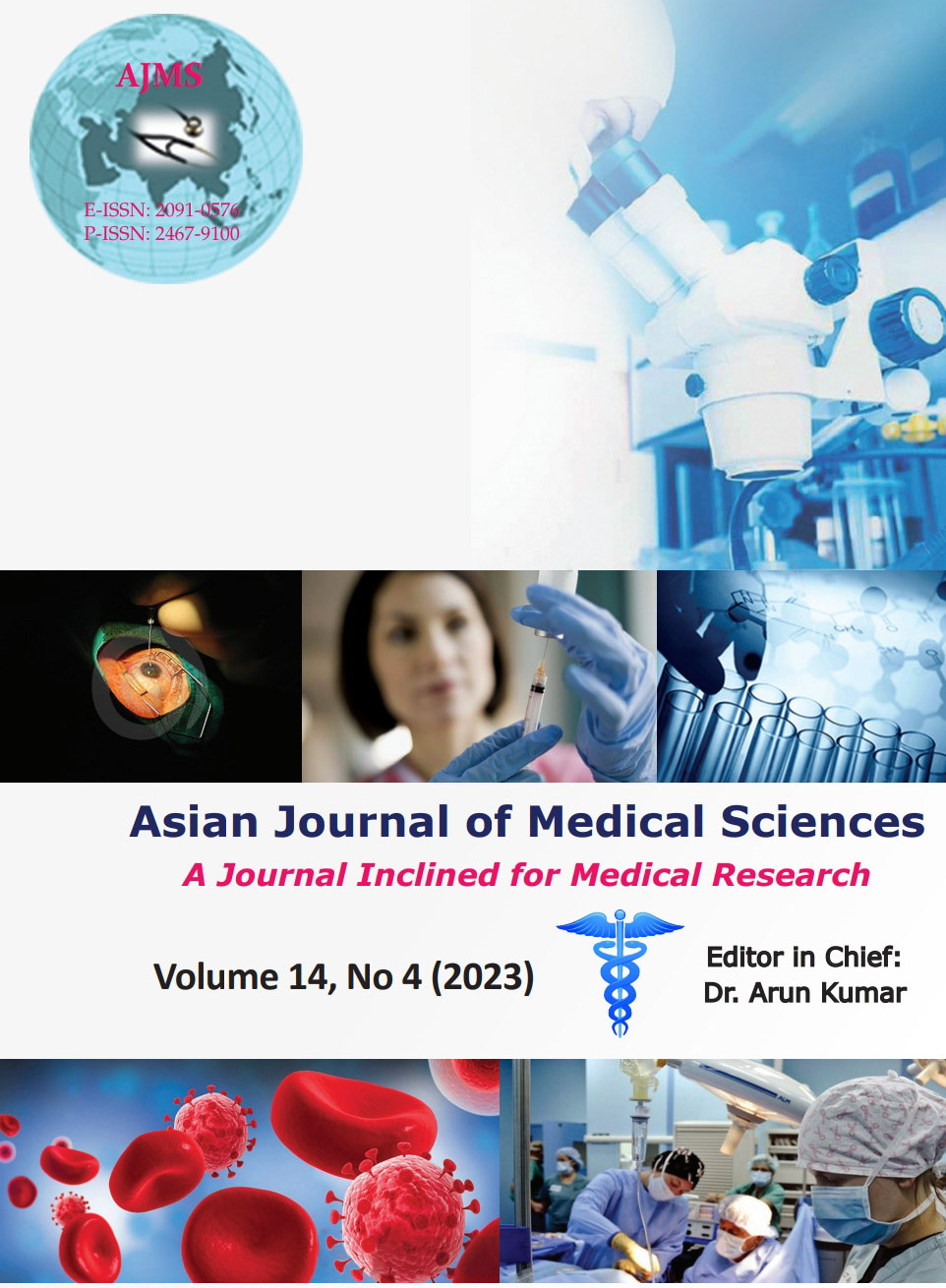A comparison of clinical profile and outcomes among different age groups of critically ill elderly patients in a tertiary level hospital in Nepal: A retrospective study
Keywords:
Acute physiology and chronic health evaluation II score; Clinical characteristics; Elderly; Intensive care unit; OutcomesAbstract
Background: Ageing population has increased the rate of hospitalizations and demand for critical care services. The data on the clinical profile and outcomes of different groups of elderly admitted to the intensive care units (ICU) are however sparse.
Aims and Objectives: The aim of this study was to evaluate and compare the clinical profile and outcomes among different age groups of critically ill elderly patients admitted to the ICU of a tertiary level hospital.
Materials and Methods: This retrospective and observational study reviewed all the elderly patients aged 60 years and above, admitted to the ICU of a tertiary hospital over a period of 1 year. The patients were divided into three groups, 60–69 years, 70–79 years, and 80 years and above. Non-probability sampling was done. Kruskal–Wallis H test was performed to compare the median values of the variables between the three groups.
Results: Among 173 patients analyzed, the three groups did not differ in clinical characteristics, requirement of renal replacement therapy and cardiovascular support, length of stay (LOS) in ICU, LOS in mechanical ventilator, and patients who improved and transferred out of ICU. Acute physiology and chronic health evaluation II (APACHE) II score was significantly higher in 70–79 years compared to the other two groups (P=0.01) as was the in-hospital mortality (P=0.03).
Conclusion: APACHE II score rather than age is a good predictor of adverse outcomes in ICU. Age should not be used to preclude the utilization of resources in ICU.
Downloads
Downloads
Published
How to Cite
Issue
Section
License
Copyright (c) 2023 Asian Journal of Medical Sciences

This work is licensed under a Creative Commons Attribution-NonCommercial 4.0 International License.
Authors who publish with this journal agree to the following terms:
- The journal holds copyright and publishes the work under a Creative Commons CC-BY-NC license that permits use, distribution and reprduction in any medium, provided the original work is properly cited and is not used for commercial purposes. The journal should be recognised as the original publisher of this work.
- Authors are able to enter into separate, additional contractual arrangements for the non-exclusive distribution of the journal's published version of the work (e.g., post it to an institutional repository or publish it in a book), with an acknowledgement of its initial publication in this journal.
- Authors are permitted and encouraged to post their work online (e.g., in institutional repositories or on their website) prior to and during the submission process, as it can lead to productive exchanges, as well as earlier and greater citation of published work (See The Effect of Open Access).




